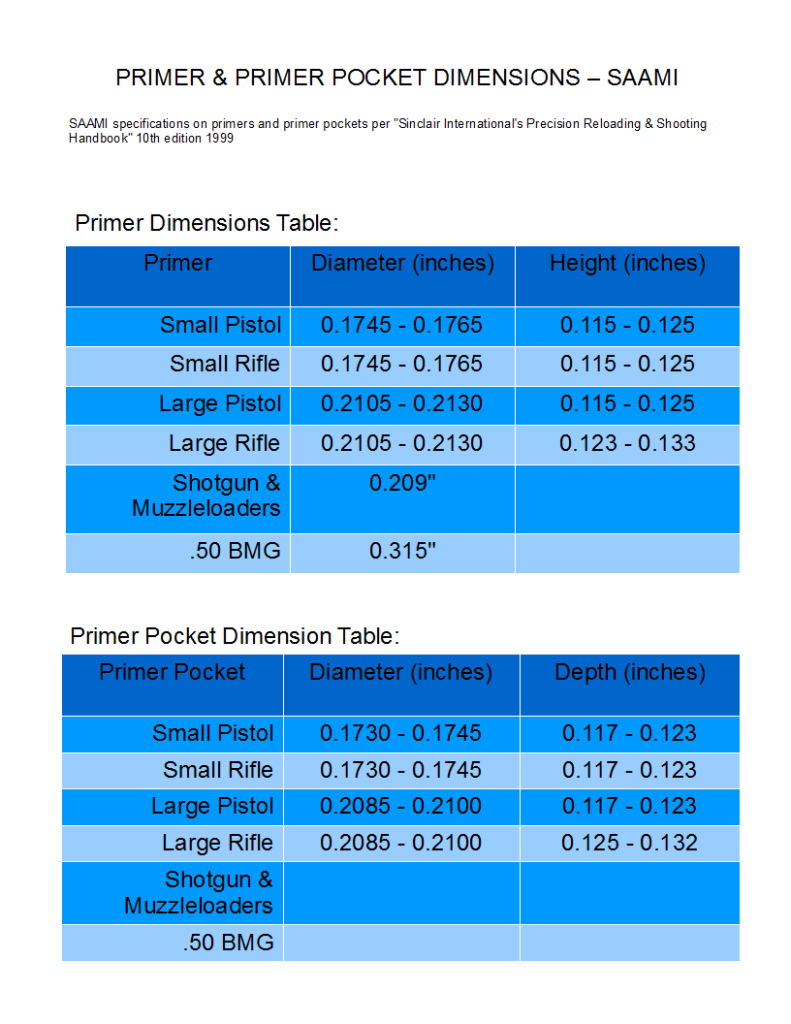CUP THICKNESS
Different primers have different cup thicknesses. You can see the importance of cup thickness when primers are considered for semiautomatic rifles that have free-floating firing pins.
Handgun primers have thinner cups than rifle primers, making them easier to ignite with the typically weaker firing pin fall of handguns. Small Pistol primer cups are .017' thick, while Large Pistol primer cups are .020' thick. This is the reason using handgun primers in .22 Hornet rifle loads sometimes results in pierced primers in some guns.
Obviously their substitution in the high pressure .223 Remington would not be a good idea.
Even the same type of primers from different manufacturers can have different cup thickness. Federal primers tend to have thinner cups than Winchester, Remington and CCI primers. On occasion this can be handy.
Some revolver trigger and action lightening jobs may result in a lighter hammer fall that results in not all the primers going off. A switch to Federal pistol primers can make the load 100% again.
The same thing can happen in cold weather with some “modern” bolt actions with light, fast firing pins. These are supposed to whack primers with the same approximate energy as an old-fashioned 98 Mauser strike, but under some adverse conditions they can occasionally use a little help. Federal primers can provide that help.
With Remington small rifle primers, the 6 ½ primer has a thin cup and is not recommended for higher pressure rounds like the common .223 Remington. It was intended for the .22 Hornet. When Remington introduced their .17 Remington round in 1971 they found that the 6 ½ primer was not suitable to the high-pressure .17. The 7 ½ BR primer was developed for this reason.
According to Remington, the 7 ½ has a 25% greater cup thickness and they state on their web site: 'In rifle cartridges, the 6-1/2 small rifle primer should not be used in the 17 Remington, 222 Remington or the 223 Remington. The 7-1/2 BR is the proper small rifle primer for these rounds.'
CCI/Speer Technical Services says: 'The CCI 400 primer does have a thinner cup bottom than CCI 450, #41 or BR4 primers... [with] the CCI #41 primer... there is more 'distance' between the tip of the anvil and the bottom of the cup.' so that is their AR15 recommendation, although it seems like there are no complaints with using the BR4 and 450 primers by AR15 shooters and reloaders, in general.
The #41 just gives you a little more safety margin for free-floating firing pins and would be the best choice for commercial reloaders who have no control over the rifles their .223 ammo is used in.
Another factor which determines the strength of a primer cup is the work-hardened state of the brass used to make the primer cup. They are made with cartridge brass (70% copper, 30% zinc), which can vary from 46,000 psi, soft, to 76,000 psi tensile strength when fully hardened.
Manufacturers specify to their brass suppliers the hardness of brass desired. It is possible that a primer manufacturer could choose a harder brass in order to keep material thickness down and reduce costs. Winchester WSR primers are somewhat thin, yet seem to be resistant to slam-fires and this is likely due to this hardness factor.
Large rifle primers all appear to have the same cup thickness of .027', no matter what the type.
This also affects pressure tolerance. Cases that utilize small rifle primers and operate at moderate pressures(40,000 psi) should use CCI 400, Federal 200, Rem 6 1/2, or Win WSR. Such cases include 22 CCM, 22 Hornet and the 218 Bee. These primers can also used in handguns such as the 9mm., 357, etc. Other cases that use the small rifle primer can use the above primers only if moderate loads are used. Keep to the lower end of reloading recommendations.
Cases that utilize Small Rifle primers and operate at higher pressures (55,000 psi) should use CCI 450, CCI BR4, Fed 205 and Rem 7 1/2 etc.
MATCH or BENCH REST PRIMERS
The difference between match primers and standard primers is the degree of testing and quality control used in their making.
Hornady reports that in their research that match-grade primers performed very, very consistently from load to load as measured in their pressure tests.
CCI states that Benchrest cups and anvils are selected for exceptional uniformity. During the assembly operation, the operator who meters the primer mix into the cups (or 'charger') is chosen from the most experienced workers with an outstanding record of consistency. The BR line runs at a little slower pace to provide time for extra inspection.



 Reply With Quote
Reply With Quote









Bookmarks